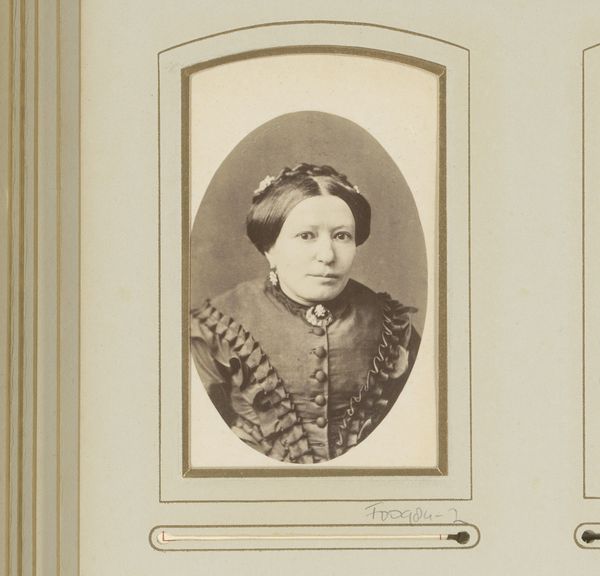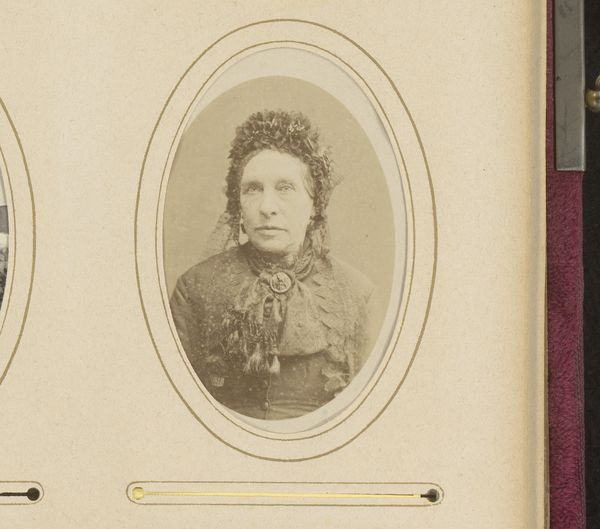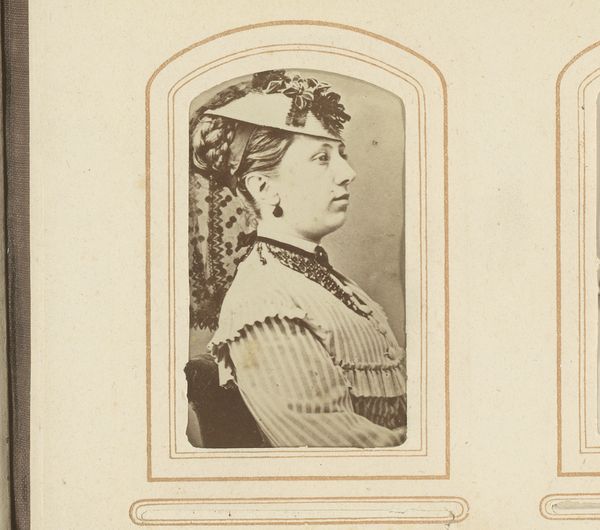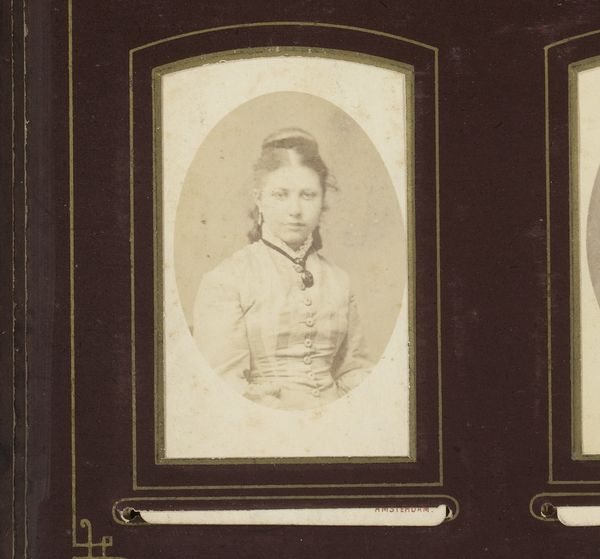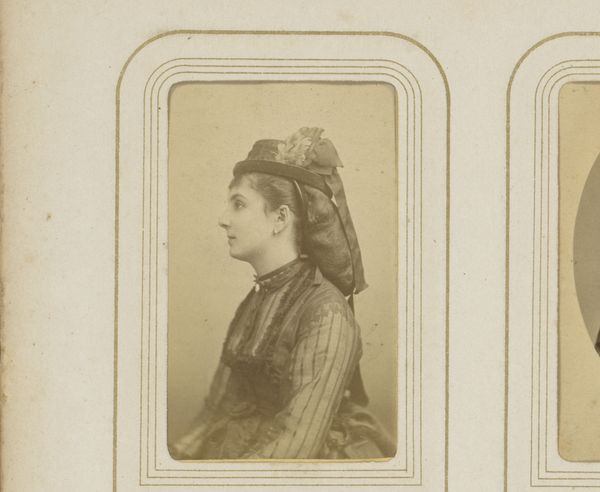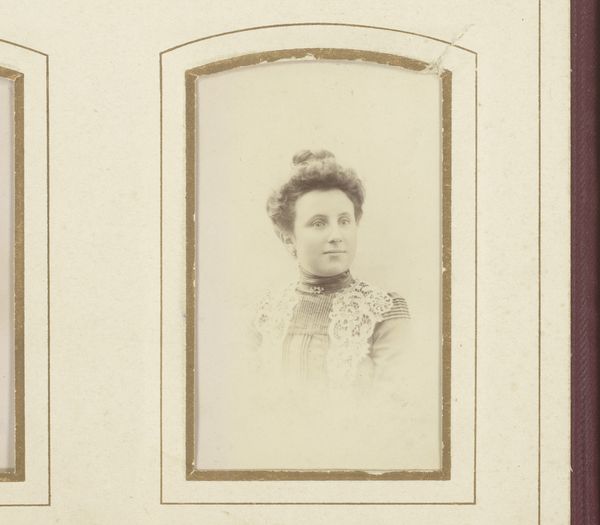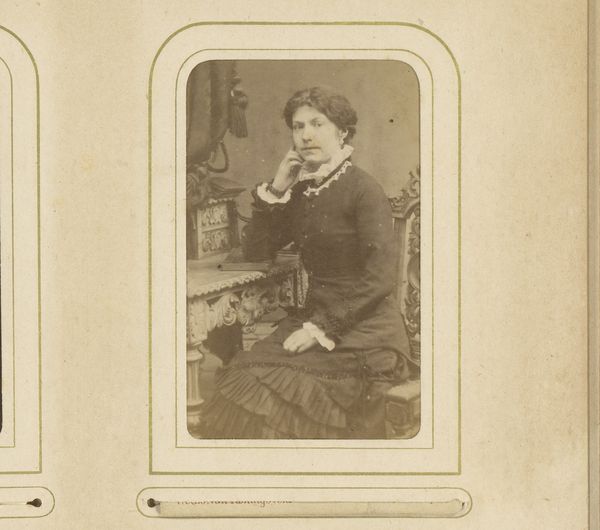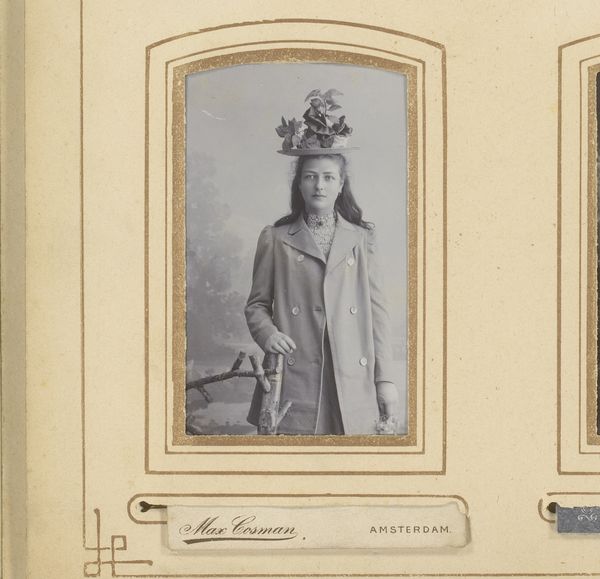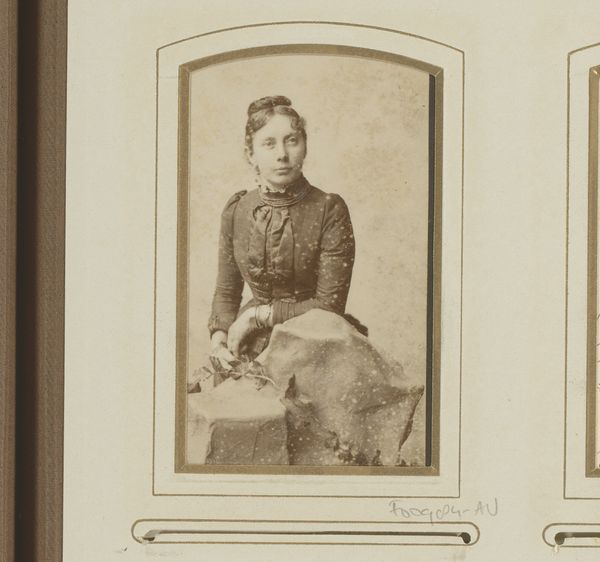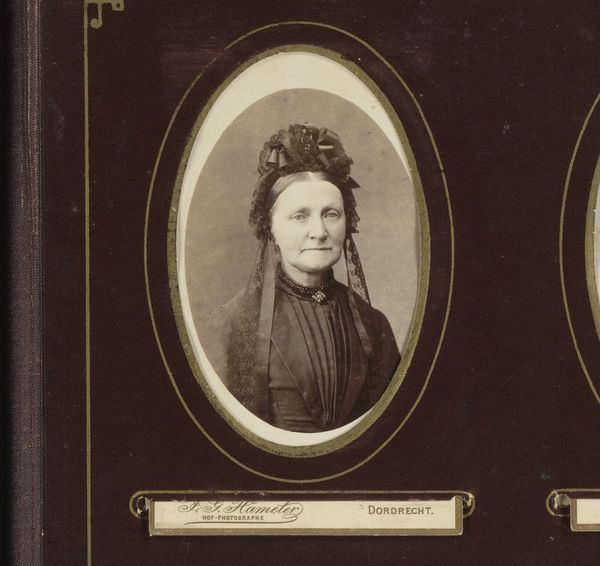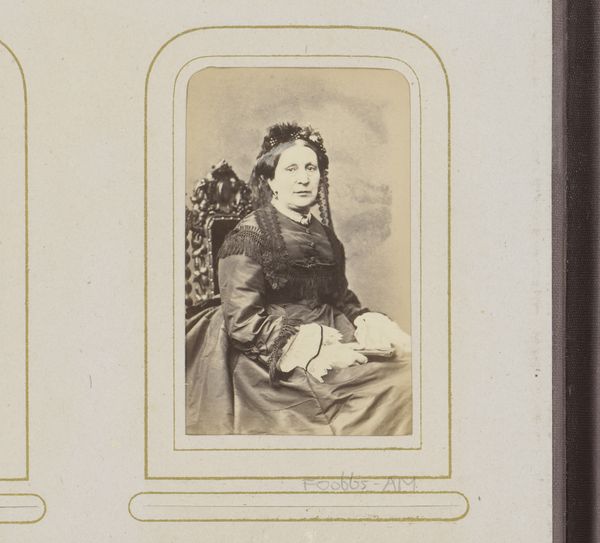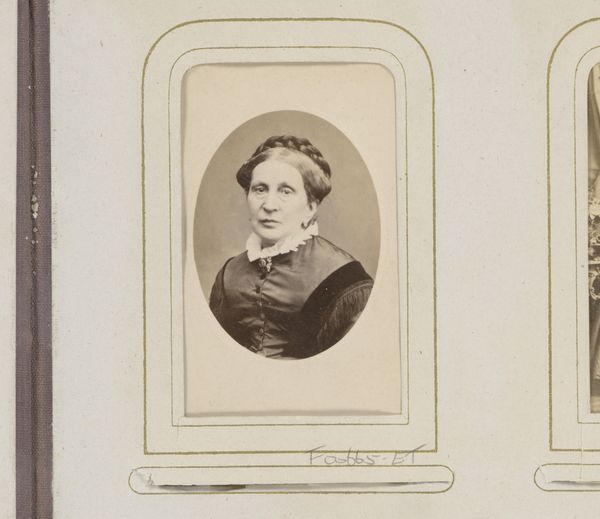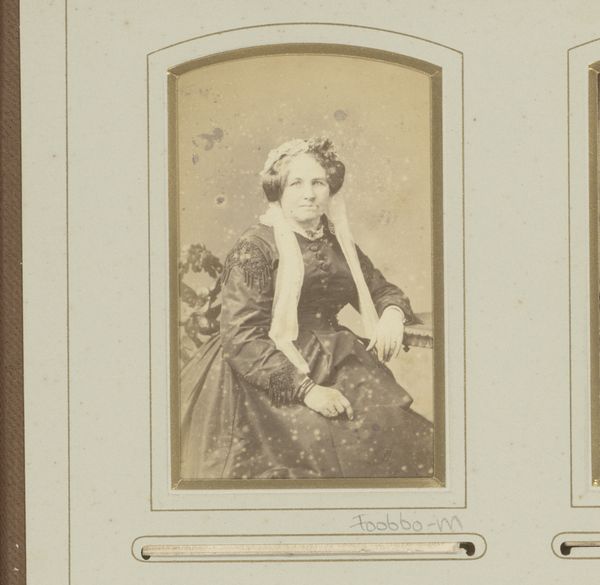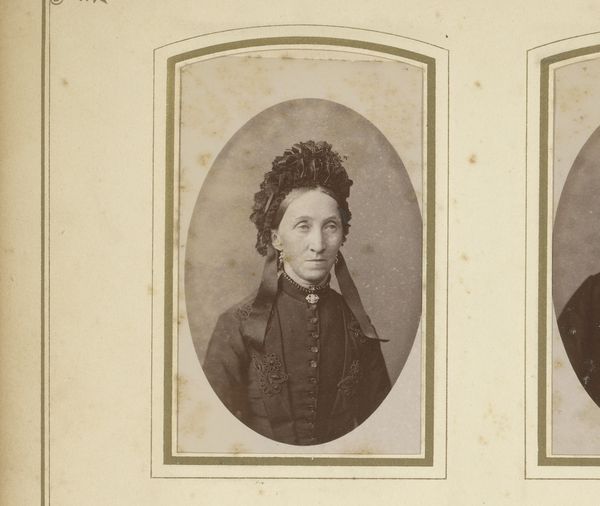
photography, albumen-print
#
portrait
#
photography
#
historical photography
#
19th century
#
albumen-print
Dimensions: height 78 mm, width 46 mm
Copyright: Rijks Museum: Open Domain
Curator: Looking at "Portret van een vrouw met muts," a photograph attributed to Louis Robert Werner, captured sometime between 1878 and 1886 and now housed in the Rijksmuseum, I find myself pondering the stark formality of the subject, caught between an obvious attempt to signal her status with lace and florals. Editor: The starkness strikes me immediately too, though I see it less in her posture and more in the photograph itself. It's such a formal composition and I am really focusing on the composition and lighting, with the woman positioned almost centrally. Her gaze pulls me right in, yet the faded albumen print seems to push me back into the past. Curator: Right. This albumen print offers more than a fleeting gaze; it delivers tangible insight into late 19th-century studio practices. The labor involved in creating and marketing photographs like these cannot be overlooked and offers key historical context here. We must consider Werner's place within the broader industry, capturing the aspirations of middle-class citizens looking to document themselves as members of a thriving urban economy. Editor: I can see how labor affects the production value, but I'm equally captivated by the way light models her face. The subtle gradations articulate such depth. Consider, also, the formal arrangement of the lace collar and the contrast of the smooth jacket with the crinkled bonnet; these provide depth. These aren’t mere objects but elements structured deliberately to create an enduring visual language. Curator: Yes, I suppose. But that visual language would only take us so far, wouldn't it? Consider what a photograph such as this—reproduced en masse as a demonstration of skill—would mean to the sitter and to those circulating this kind of imagery. Here we can address consumption, class status, and societal roles for both the photographer and subject. It provides a material history. Editor: Material history, yes, but also artistic interpretation, even manipulation, on Werner's part. To analyze how visual elements contribute to our understanding—or perhaps misunderstanding—of her emotional landscape seems a worthwhile pursuit. How, through photography, can transient moments turn to near-eternal icons, and the way it creates a very specific mood is, to me, something that will affect any future encounters or social implications the photograph might come across. Curator: I will say, analyzing its function within consumer culture illuminates dimensions beyond aesthetic readings of light or pose, making this quite revealing in that light. Editor: I think understanding each level deepens and supports an analysis, whether we analyze formal composition or understand labor practice; it only gives context for further appreciation of the artwork.
Comments
No comments
Be the first to comment and join the conversation on the ultimate creative platform.
